Samoyed
Musculoskeletal System
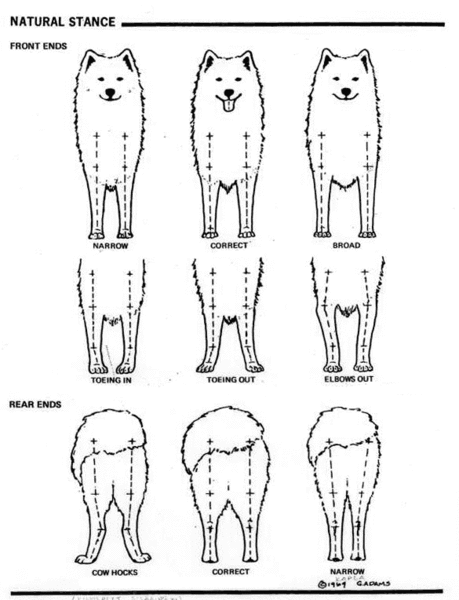
Posture
The dog's stance must be straight, without splayed or converging paws.
Important is early access for puppies – plenty of natural movement and non-slip floors.
Narrow or converging stance can be improved by strengthening chest muscles. Running in deep snow or water helps expand the stance. Pulling does not help correct a narrow chest.
Splayed elbows are corrected by strengthening chest and shoulder muscles. Running downhill, swimming, or cycling is ideal. Pulling or uphill running is not recommended.
Movement
At trot and run, limbs stretch properly. Pay attention to pacing – front and hind paws move in the same direction simultaneously.
Leg movement should be wide and straight.
Narrow rear movement can be trained on balance surfaces, strengthening hind legs and pelvic muscles. Hydrotherapy and free running at maximum speed help.
Pacing is mostly an aesthetic issue at shows. Improvement comes from increased fitness, cycling, or trotting on soft terrain. Canter is too fast, so monitor speed and control dog’s movement. Correct pacing with gentle touch or leash tension.
Short strides can be improved by trot training at maximum speed, gradually increasing trot frequency to maximize range of motion and relax pelvic and back muscles.
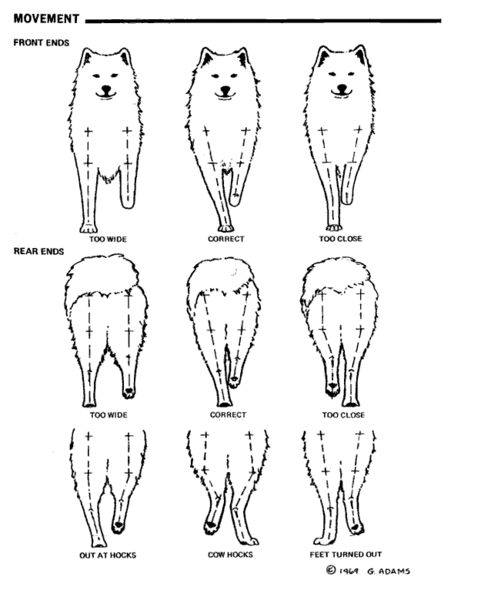
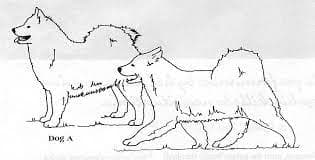
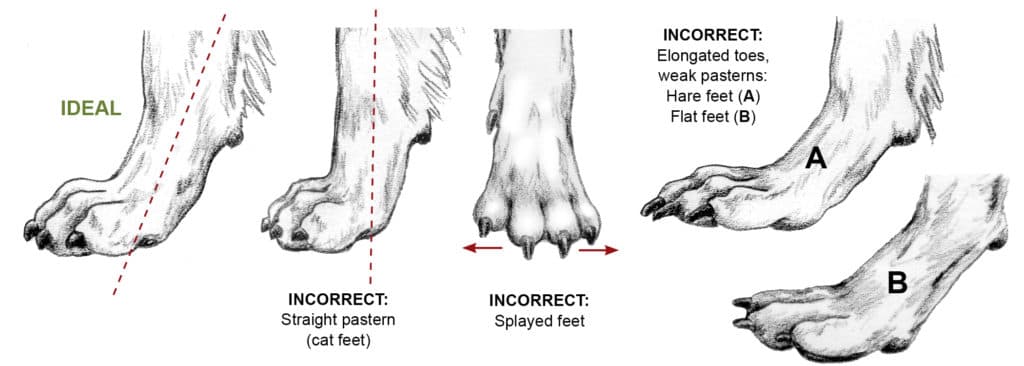
Paw
Healthy paws are strong, muscular, and have correct angles.
Proper paw development is ensured during puppy growth through exercise and strengthening. Genetics may play a role.
Soft metacarpus (paddling) is corrected by strengthening paw muscles. Swimming and hydrotherapy are recommended; avoid jumps, long canters, and walking on hard surfaces.
Dysplasia
May be hereditary or caused by rapid puppy growth – excessive weight, incorrect movement, or lack of minerals/vitamins.
Suspected dysplasia or orthopedic issues should always be checked by a veterinarian. Diagnosed via X-ray in proper positioning. Warning signs: reduced activity, difficulty rising, reluctance to move.
Treatment is possible, but treated dogs should not be used for breeding. Conservative methods include physiotherapy, anti-inflammatory medication, and weight control. Surgery depends on hip dysplasia stage and age.
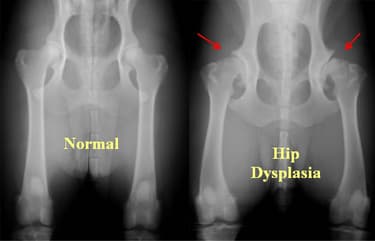
Head
DOV
Inherited eye disorders can be detected by ophthalmologic exams and genetic tests from blood or saliva.
Recommended genetic tests:
- Cone Degeneration
- Progressive Retinal Atrophy XL-PRA
- Nephritis
Veterinary ophthalmology exam includes:
- Intraocular pressure measurement (norm up to 25)
- Pupil dilation and eye fundus check – lens, vitreous, retina, optic disc
- Tear tests (if needed)
- Gonioscopy – anesthetic drops, gonioscopic lens, examine chamber angle
All results should be evaluated in the context of the dog's pedigree, breed characteristics, and tendency for eye defects.
Puppies should be accustomed to eyelid handling before the exam to ensure calm behavior and accurate results.
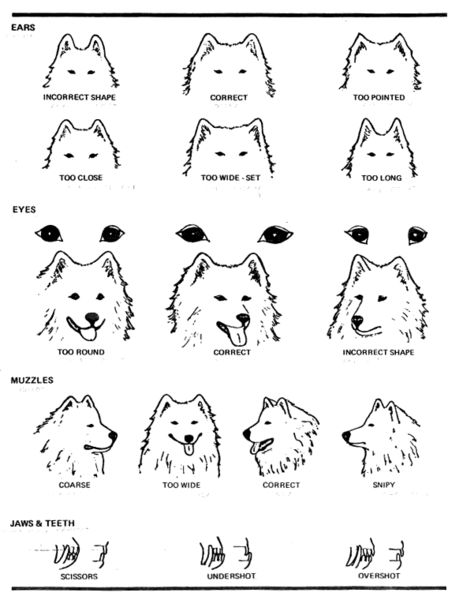
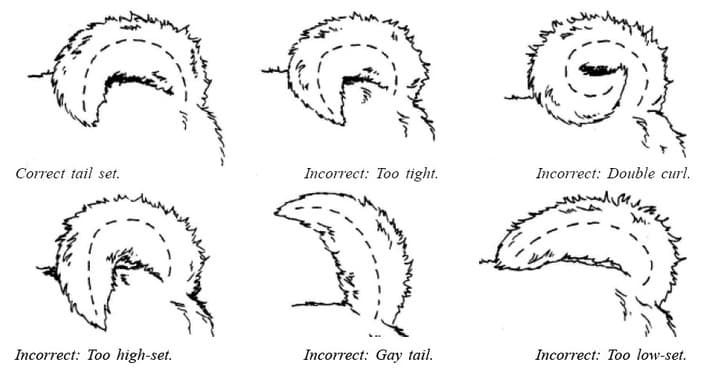
Tail
Influencing tail growth is nearly impossible, but whether it is held up can be trained.
Tail muscles must be used for strength; Samoyeds naturally hold it properly.
Dogs living in gardens are exposed to many stimuli, which encourages tail muscles and proper carriage over the back.